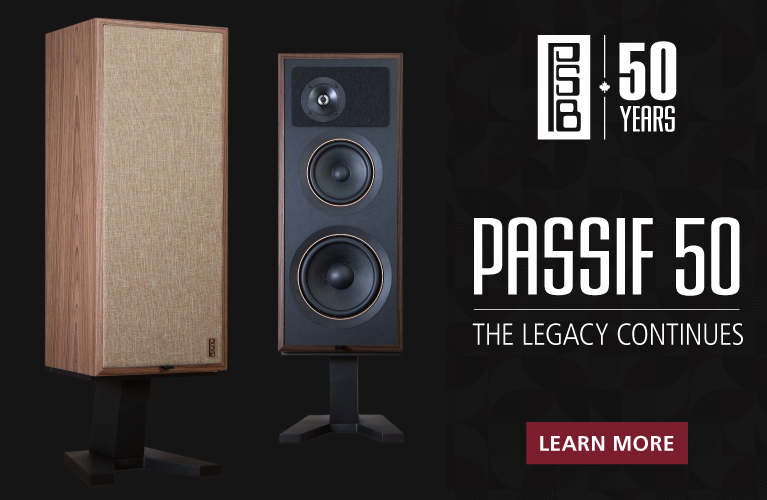Note: Measurements taken in the anechoic chamber at Canada's National Research Council can be found through this link.
 Vivid Audio launched its first product in 2004: the Oval B1 loudspeaker. Like every Vivid model that has followed it, the Oval B1 was designed in Britain by Laurence Dickie, but is made in Vivid’s factory in South Africa. Although I knew about the B1 shortly after it came out, I paid little attention to it or to any other Vivid speaker until 2010, when I examined the B1 closely at an audio show and realized that under its unique exterior were some very advanced design ideas that I hadn’t seen implemented in any speaker -- such as the way the drivers were mounted to the cabinet, what the cabinet was made of, and even its shape.
Vivid Audio launched its first product in 2004: the Oval B1 loudspeaker. Like every Vivid model that has followed it, the Oval B1 was designed in Britain by Laurence Dickie, but is made in Vivid’s factory in South Africa. Although I knew about the B1 shortly after it came out, I paid little attention to it or to any other Vivid speaker until 2010, when I examined the B1 closely at an audio show and realized that under its unique exterior were some very advanced design ideas that I hadn’t seen implemented in any speaker -- such as the way the drivers were mounted to the cabinet, what the cabinet was made of, and even its shape.
Late to the party but at last intrigued, I reviewed the Oval B1 later that year. When I did, I realized that it had been an oversight on my part not to look at their speakers before -- the Oval B1 wasn’t perfect, but its sensational sound made it my favorite speaker for under $20,000 USD per pair. (The retail price was then $15,000/pair; it’s now $18,000/pair.) Some 18 months later, I reviewed Vivid’s second-from-the-top model, the Giya G2 ($50,000/pair) -- still the best-sounding full-range speaker I’ve had in my listening room.
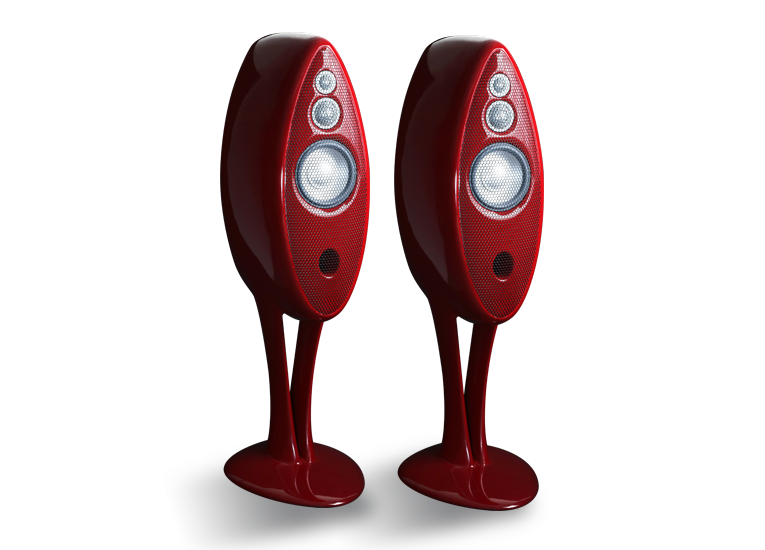
When Vivid celebrated its tenth anniversary, in 2014, Dickie was convinced by friends and colleagues, including Vivid cofounder Philip Guttentag, to do something he’d never before considered: completely redesign one of Vivid’s existing models. Intrigued, he decided that the Oval B1 would be the ideal candidate -- it’s the model that began it all, and he felt that in the preceding decade he’d learned plenty, particularly from designing the flagship Giya models. The result is the Oval B1 Decade, or B1D for short. Not a replacement for the original B1, which is still available, the B1D is being produced in a limited edition of 400 pairs: 200 pairs in the Piano Black finish, which I haven’t yet seen, and 200 pairs in Rosso Red, which is what my review pair came in -- they looked smashing. The B1D sells for $28,000/pair and represents the pinnacle of what Dickie and Guttentag feel can be achieved in the Oval series.
Description
Laurence Dickie told me that the first choices he made in the redesign of the Oval B1 were of what would remain unchanged: its overall shape of an oval main cabinet permanently affixed to a stand and base, the whole looking vaguely like a tennis racket; and its three-and-a-half-way driver configuration of front-firing tweeter, midrange, and woofer, with a second woofer firing to the rear.
Then came the differences. The B1’s entire cabinet, stand, and base are made of a mineral-filled resin composite; in the B1D, that material is used only for the stand and base. The B1D’s cabinet is made of the same materials as the Giya series: vacuum-infused, fiberglass-reinforced resin sandwiching a balsa core. The resulting light, stiff cabinet has a much higher resonant frequency than the B1’s, meaning that any cabinet resonances are even less likely to be heard when the speaker is reproducing music. According to Dickie, the switch to the newer, far more labor-intensive materials accounts for most of the $10,000 difference in price between the B1 and B1D.
To provide a smooth wavelaunch for each driver while improving the speaker’s appearance, the B1D’s front and rear baffles are now slightly convex instead of flat, as in the B1, and all drivers are now slightly recessed into the front and rear baffles, each surrounded by a shallow, rounded bevel. All in all, this sculpting makes the speaker appear even more shapely and attractive to my eyes. The B1D’s front and rear ports are strictly oval, rather than the egg shape used in the B1, and ridges now run around the front and rear baffles. These ridges meet the perimeters of the two magnetically attached, wire-mesh grilles supplied for each speaker: one for the entire front baffle, the other for the entire rear baffle.
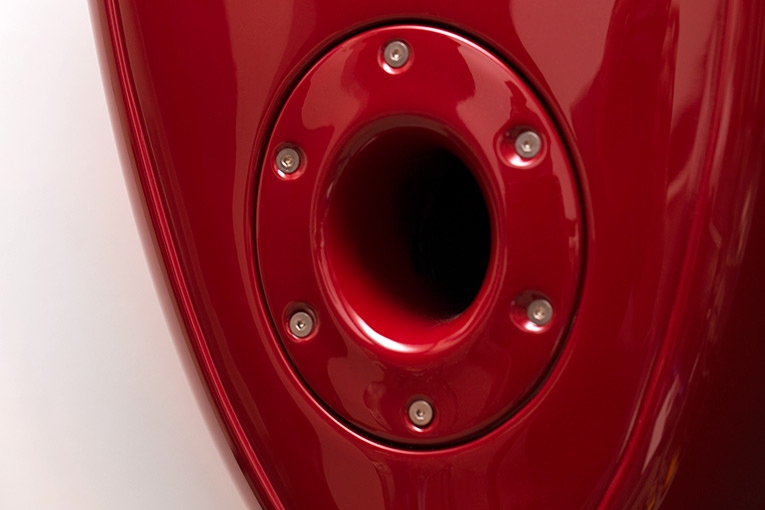
As on all Vivid speakers, no driver bolts or screws are visible because there are none. Instead, the tweeter and midrange are attached to the company’s tapered tubes, which effectively dissipate the rearward energy produced by the drivers’ diaphragms. Dickie originally developed this tapered-tube technology for Bowers & Wilkins, where he worked from the early 1980s to the mid-’90s, for use in the Nautilus loudspeaker. (The Nautilus, released in 1993, is still in production today -- it’s had the longest run of any B&W design by far.) Dickie has used tapered tubes in every Vivid model. Each tube is affixed to the rear of the cabinet with a single bolt, and the opposed front and rear woofers are connected to each other inside the cabinet with a thick metal rod, to create a force-canceling effect designed to reduce the amount of resonances reaching the cabinet. To further decouple all drivers from the enclosure, there’s a silicone O-ring between each driver’s frame and the cabinet.
With the B1, it was tricky to affix speaker cables to the binding posts that emerge from the rear edge of the speaker’s base -- even with the floor spikes installed, the base is thin and low. The B1D’s thicker base provides a bit more room to attach cables to its two sets of binding posts (for biwiring, if you like; jumpers are supplied for single wiring, which is how I connected them). It’s still not effortless, but it’s better. Etched into a small metal plaque on the top of the base, toward the rear, are Vivid’s logo and the words “Limited Edition.”
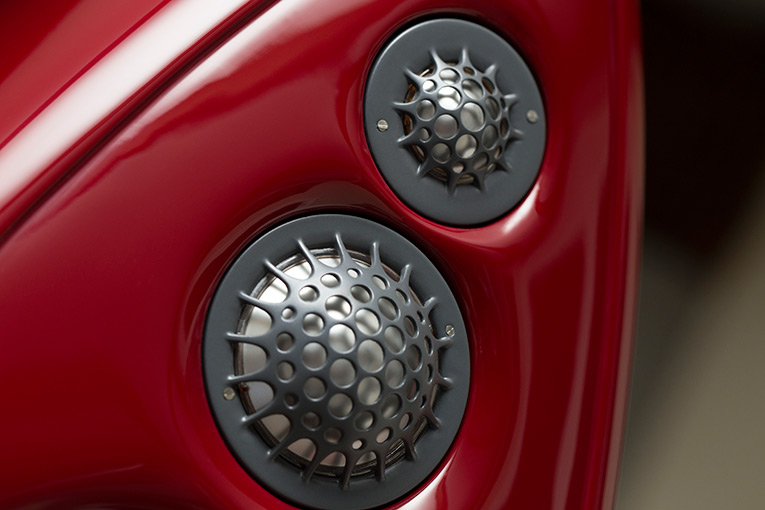
The B1D uses Vivid’s D26 1” (26mm) dome tweeter and D50 2” (50mm) dome midrange driver, both of which are used in the B1 and are here crossed over at the same frequency: 3500Hz. But instead of being left unprotected, as in the B1, each driver has its own permanently affixed grille. The vulnerability of the tweeter and midrange domes, which are aluminum alloy, has been a problem for owners of Vivid speakers from the start -- Vivid’s domes are more fragile than most, and easily dented. According to Dickie, these little grilles don’t degrade the sound. If you leave the main grilles off, which I did for most of my listening -- the speakers sounded and looked better with them off -- you can rest a little easier knowing that these little drivers are well protected.
The B1D’s two C125 woofers have 5” (125mm) aluminum-alloy cones and include improvements over the woofers used in the B1. (Including the surround, the driver is actually about 6.5” across.) The main difference is that Dickie has moved the magnet from the rear so that the magnet now surrounds the coil. While developing the C225 8.75” (225mm) woofer for Vivid’s top model, the Giya G1 ($68,000/pair), he’d discovered the benefits of this positioning, as he outlined to me in an e-mail: “Relocating the magnet doesn’t only improve the efficiency of the system, in this case giving us a 25mm-long gap instead of 20mm from the same amount of material, but it also dramatically increases the magnetic reluctance around the voice coil, so decreasing its inductance and improving the upper-frequency performance.”
As in the B1, the B1D’s rear woofer operates with full force below 100Hz to supplement the front woofer in the lowest frequencies, but is rolled off above that frequency. The front woofer operates throughout the bass range until it hands off to the midrange at 880Hz. The B1D’s bass extension is specified as 35Hz.
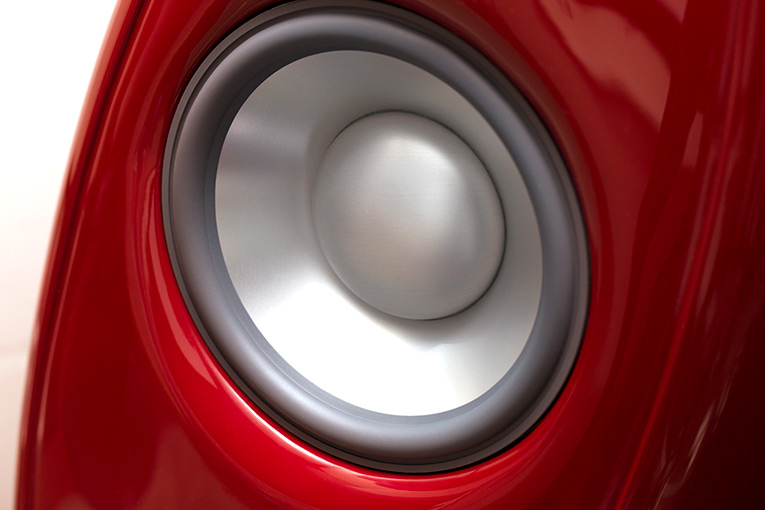
The B1D’s new woofers, and the redesign of the crossover to accommodate them, produced profoundly different results when we had the speaker measured in the anechoic chamber at Canada’s National Research Council. In the charts plotted for the measurements of the original B1, a large cancellation of about 8dB was visible just below 400Hz when the microphone was placed directly in front of the speaker, on the tweeter axis -- the result of the outputs of the front and rear woofers summing out of phase. But that cancellation didn’t carry the entire way around the speaker. When the mike was pointed at the middle of either side of the speaker, from the same distance away as when measured on axis to the tweeter, the woofers’ cancellation was almost completely eliminated.
What precise effect the on-axis cancellation would have in a listening room full of the walls’ reflections of the direct soundwaves no one knew, because no two rooms are the same. But it had always bothered Dickie to see it in the measurements, and most consumers and even reviewers didn’t understand why it was there. As a result, one of the reasons I didn’t receive my review pair of B1Ds until December 2015 -- six months after a prototype was shown at Munich’s High End -- was because Dickie was still working on the new woofers and crossover to mitigate this cancellation. Our measurements show that his work was worthwhile; the cancellation on axis is now only about 2dB -- a reduction of 6dB, which is significant.
In the same e-mail to me, Dickie explained to me how he was able to do this: “The effect of having a rising response [in the new woofers] is rather more dramatic. More mid energy in the front driver means we can have better attenuation of the rear driver, while preserving the overall power response and so reducing the interaction of the two in the midrange to 100Hz range.”
Vivid Audio specifies the B1D’s sensitivity as 87dB/2.83V/m and its nominal impedance as 4 ohms, with a minimum impedance of 2.3 ohms. They make no recommendation for minimum amplification, but when I drove the review samples through the 4-ohm taps of JE Audio’s VM60 60W monaural tube amplifiers, I was able to crank them to very high listening levels before the amps began distorting -- if you don’t need to play a pair superloud in a very large room, I think 60W will be a safe minimum. If you do want to throw big power at a pair of B1Ds, their maximum power handling with music is specified as a ballsy 300W.
Setup
I began by placing the Oval B1 Decades about 7.5’ apart, measured from the centers of the tweeters, with 20 degrees of toe-in, which is how I typically set up speakers for my room. My listening seat was also about 7.5’ from each speaker. That worked well for the bass, lower midrange, and highs, but I was getting a bit too much upper-midrange energy -- the B1Ds didn’t sound bright, but were too forward in the upper mids. I ended up with the speakers facing straight ahead (no toe-in), which put their tweeters just over 8’ apart. This perfectly tamed the forwardness while leaving intact all the bass and still providing sufficient energy in the extreme highs.
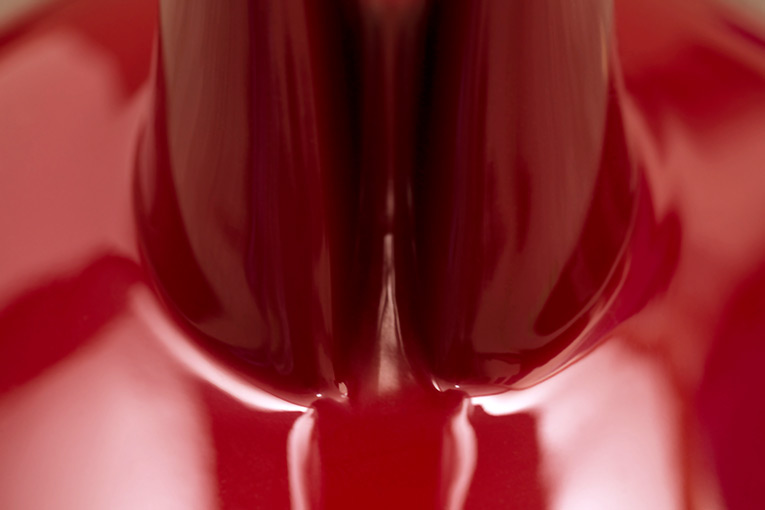
I drove the B1Ds primarily with my Blue Circle Audio BC204 stereo amplifier (150Wpc into 8 ohms or 250 into 4 ohms). I also used them with Audio Research’s GS150 stereo amp (155Wpc into 8 or 4 ohms), which I’m currently reviewing, as well as the JE Audio monoblocks. Up front were Simaudio’s Moon Evolution 740P preamplifier, with the optional Moon Evolution 820S power supply; Hegel Music Systems’ HD30 DAC; and my Samsung laptop running Windows 10, JRiver Media Center 20, and the Tidal music-streaming service. Connecting DAC to computer was an AudioQuest Carbon USB cable, with one of AQ’s JitterBug USB filters between the Carbon and the USB port. Crystal Cable Standard Diamond interconnects and Siltech Classic Anniversary 330L speaker cables conveyed analog signals. All electronics were plugged into one of two Shunyata Research Venom PS8 power conditioners (one each for the source components and amps), each with a Shunyata Venom Defender noise reducer/EMI suppressor plugged into one of the receptacles. Shunyata’s Venom HC power cables were on the preamp and DAC, but for the power amps I used each company’s stock cord.
Sound
The first time I played Vivid’s original Oval B1s, in 2010, I was astonished by their reproduction of the midrange and highs: men’s and women’s voices were projected with uncanny clarity, detail, and ease; piano keystrokes sounded incisive, forceful, and clean; guitars leapt onto the soundstage with vibrancy and immediacy. I’d never heard such clear, open sound. In those respects, the bar for me had been raised; by comparison, the otherwise excellent-sounding speakers that followed -- the Sonus Faber Olympica III ($13,500/pair), Magico S5 ($29,500/pair), and Polymer Audio Research MKS ($42,000/pair) -- sounded closed in and less clear. Since the Oval B1, only two other speakers have displayed that kind of openness, transparency, and ease through the mids and highs, and they’re both Vivids: the Giya G2 . . . and now the Oval B1 Decade.
When I played through the B1Ds “One Step Up,” from Bruce Springsteen’s Tunnel of Love (16-bit/44.1kHz FLAC, Columbia) -- a track I’d also played through the B1s -- his raspy voice projected from center stage with as much presence and immediacy as I’ve ever heard. When Patti Scialfa’s backing vocal enters later in the song, her voice sounded incredibly clear and precise -- there was absolutely no veil between her voice and me. But this 1987 recording is far from perfect, with a steely sound common among digital recordings of that era, and the B1Ds really let me hear its flaws. They weren’t that apparent in Scialfa’s voice, but were particularly noticeable in Springsteen’s, as well as in his guitar -- both had a somewhat metallic quality that wasn’t a fault of the speakers but of the recording, as I know from having listened to “One Step Up” through many different systems and speakers. The important thing was that the steeliness was more apparent through the B1Ds than ever before.
In short, the “sound” of the hyper-revealing B1Ds changed with the recording. High, Low or In Between, by the voice-and-cello duo of Katarina and Svante Henryson (24/96 FLAC, BIS), is a spare, intimate recording along the lines of Musica Nuda’s albums. Whereas the B1Ds spotlit flaws in Springsteen’s 30-year-old recording, the strengths of this 2016 release shone through -- Katarina’s soaring voice captivated me in the B1Ds’ clean, effortless reproduction, whether played whisper-quiet or at extraordinarily loud listening levels; the richness of the sound of Svante’s cello also struck me, as did the great amount of detail; and the soundstage sounded realistically precise in terms of where the musicians were placed on it, the distance between them, and the size of the space they were recorded in. All in all, the B1Ds showed off the care and attention paid to make this recording sound authentically like two musicians playing in the listener’s room.
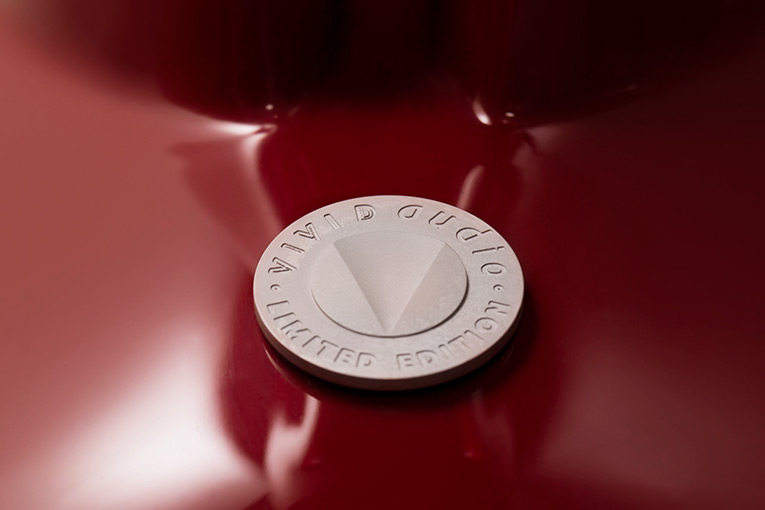
Then there was “The Road,” from Jackson Browne’s Running on Empty (Asylum), recorded and released in 1977. The best-sounding version of this track I’ve found is a 24/192 FLAC download that seems to have originally appeared in this album’s DVD-Audio edition. The first 2:58 were recorded in Room 301 of the Cross Keys Inn, in Columbia, Maryland, and the rest live at a concert in the Garden State Arts Center, in Holmdel, New Jersey. The transition is obvious no matter what speakers you play it through, Browne’s voice in particular going from a close, intimate ambience in the hotel room to louder and more reverberant, with a slightly different tonal balance, at the concert. But, as with the steeliness of the Springsteen track, through the B1Ds this transition was much more prominent than I’d ever heard it -- so much so that I was startled the first time I listened to it through the Vivids, even though I’d heard it many times before and knew it was coming. The B1D is one of the most revealing speakers available.
I don’t remember exactly how widely and deeply the B1s presented the soundstages of the recordings I’ve long used as references for that quality, which include Ennio Morricone’s score for the film The Mission (16/44.1 FLAC, Virgin) and the Cowboy Junkies’ The Trinity Session (16/44.1 FLAC, RCA). But I do remember that I was impressed enough that I wrote this about The Mission: “I heard the voices more distinctly through the B1 than through any other speaker I’ve reviewed.” Suffice it to say that all that clarity was still there with the B1Ds, along with a soundstage with the best combination of width, depth, and precise focus of aural images of instruments and voices on that soundstage that I have experienced. In “Gabriel’s Oboe,” in particular, the depth of stage extended well past the front wall of my room, with the timpani sounding exceptionally clear and situated extremely far back in the stage, so tightly focused there that I could stretch my arm, point a finger outward, look down that digit like a gun sight, and say, “those kettle drums are right there.” It was uncanny to have the positioning that identifiable. In tracks such as “Misguided Angel” and “Sweet Jane,” from The Trinity Session, Margo Timmins’s voice hung at center stage with tremendous palpability and with slightly more presence than the other musicians’ instruments, the result of her being closest to the microphone and, also, her voice being bolstered some by being amplified through a modified Klipsch Heresy speaker, a trick producer Peter J. Moore used to ensure that she sounded loud and full enough relative to the other musicians. The positions of she and the other musicians were as easily identifiable as they’d ever been, but what really stuck out at me with these tracks was the vast ambience, which seemed to reach way past my room’s front wall -- as it should, given that this album was recorded in the sanctuary of a large church. I had never heard that ambience quite so clearly -- it made the B1Ds’ re-creation of the space all the more convincing.
I emphasized combination above because, when I compared the B1Ds’ soundstaging and imaging with those of two of the best speakers I’ve recently reviewed, it didn’t better both speakers in every respect. Muraudio’s omnidirectional Domain Omni PX1s ($63,000/pair) edged out the B1Ds in width and depth, but the PX1s’ images tended to be a touch distant and diffuse. The Focal Sopra No2s ($13,999/pair) projected images in my room that were just as tight, tangible, and specific as the B1Ds’, but the Vivids nudged past the Focals in width and depth. However, when it came to doing it all at once, the B1Ds were the champs.
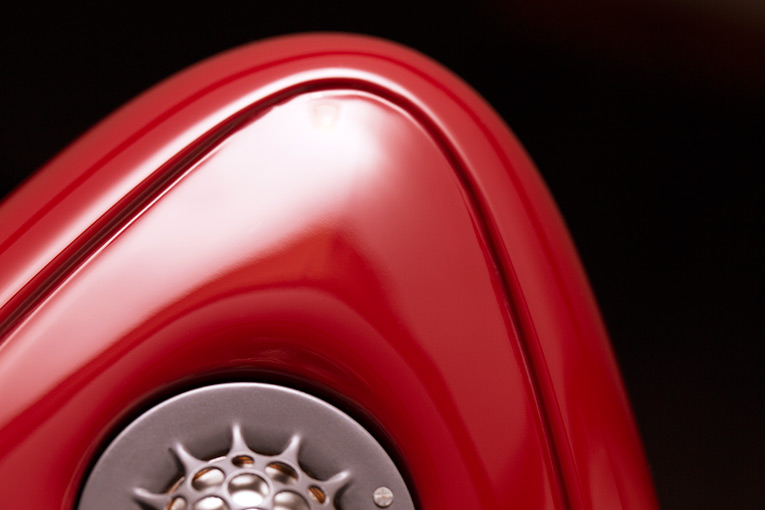
I wished I’d had Vivid’s Oval B1s here, and particularly their Giya G2s, if only to compare their highs to the B1Ds’ -- this aspect of their sound fascinated me. Although the same tweeter is used in all three models, I don’t recall the B1 or G2 sounding quite as clean in the highs as the B1D, or reproducing the top register of pianos quite as precisely -- they were clean and precise, but the B1D was uncannily so. For example, when, through the B1Ds, I streamed from Tidal a performance of How Now, from Valentina Lisitsa Plays Philip Glass (16/44.1 FLAC, Decca), I was as astounded at the precision and immediacy of Lisitsa’s keystrokes as I was with the cleanness of her piano’s topmost frequencies: utterly and undeniably pristine. As well, the B1D’s upper frequencies sounded fairly prominent and without a hint of rolloff -- soaring into the stratosphere, I thought as I listened -- which undoubtedly contributed to the speakers’ open and spacious sound, but also caused me a bit of concern . . .
With the B1Ds having so much energy in the highs and such an incisive sound overall, I was a bit worried about how they’d reproduce recordings that themselves have too much energy up top. So I pulled out Adele’s 21 (16/44.1 FLAC, XL Recordings), which can sound downright nasty through some speakers -- through the Magico S5s, it had sounded bright to the point of being shrill and shrieky. The B1Ds didn’t tame 21’s inherent brightness, but the shrieking shrillness wasn’t there -- the sound was far more palatable. Listening to other recordings that have the same kind of top-frequency emphasis, I heard their top-frequency emphasis -- the B1D didn’t roll off the topmost frequencies of the audioband in any way -- but what I didn’t hear was the brittleness or edge produced by speakers whose HF output isn’t as well behaved. At first I was tempted to write that the B1D has one of the cleanest-sounding tweeters I’ve ever heard, but a tweeter’s sound is greatly affected by the cabinet surrounding it -- diffraction can muck up even the best tweeter’s output. Instead, I’ll say that the B1D’s top end was the cleanest I’ve heard -- ever.
The B1’s reproduction of bass is the Achilles’ heel of that otherwise excellent speaker. I found the B1’s upper bass a little too boosted, and the entire lower-to-upper-bass region not quite as tight, detailed, and clear as the frequencies above. That lack of tightness, detail, and clarity created a noticeable lack of integration between the outputs of the front woofer and midrange, and a slight lack of coherence across the audioband -- the quality of output of all the B1’s drivers wasn’t quite identical. If I’d had to assign letter grades, I’d have given the B1’s tweeter and midrange an A, the woofers a B. Those woofers needed to catch up.
They have. As mentioned above, the shape of the ports, the crossover, and the woofers themselves are all different in the Oval B1 Decade. The results: no boost in the upper bass, a little more extension in the lower bass, far more detail from the lowest bass through lower midrange, and an ideal blend of the outputs of all four drivers, from lowest lows to highest highs. For example, at 1:26 into Glass’s I’m Going to Make a Cake, from Valentina Lisitsa Plays Philip Glass, the pianist starts to really slam the lower registers of her piano. Obviously, the woofers will be called more into play here, but it wasn’t as if the B1Ds were letting me know where their woofers began to do their thing; the transition from midrange driver to front woofer, and then to the rear woofer’s supplementing of the front, were utterly seamless -- which hadn’t been the case with the B1s.

So, unlike with the B1, I have no caveats about the Oval B1 Decade’s bass -- except that the B1D didn’t have much bass output below about 40Hz. This shouldn’t be surprising from a speaker with just two small woofers in a fairly small cabinet -- the B1D hinted at frequencies in the bottom octave of the audioband that it just couldn’t hit. In contrast, I’ve just begun reviewing KEF’s Blade Two, which sells for a penny shy of $25,000/pair -- $3000 less than the B1D. The KEF’s four 6.5” woofers are arranged in a force-canceling configuration in a cabinet of probably twice the volume of the B1D’s. I haven’t as yet listened much to the Blade Twos, but I’ve played the Cowboy Junkies’ “Misguided Angel” and the title track of Adam Cohen’s We Go Home (16/44.1 FLAC, Rezolute Music/EMI), both bass-heavy numbers, and compared their sounds through the Vivids and KEFs. No question -- the Blade Twos could dig far deeper, for a more room-filling sound with greater low-end weight. My best guess is that the Blade Two can reach down to 30Hz, if not a little lower, with real impact, which makes it pretty damn close to full range. (Full-range requires bass extension to 20Hz, the bottom of the audioband, at output levels that match the upper bass, midrange, and above.)
Of course, Vivid’s Giya G2 can also reach lower than the B1D -- down to at least 30Hz, also with tremendous authority. That’s where the B1D mostly fell short of the G2: in the deep bass. And when push comes to shove, I believe the G2 can play a bit louder than the B1D. I played some really raucous rock through the B1D at shockingly high volumes -- far higher than most speakers of similar size can play, and higher than most people would ever think to play their speakers. The B1Ds’ sound held together fine under such punishment, but in some extremely loud passages I could sense I shouldn’t push them further -- the subtlest hints of high-frequency compression and hardness were setting in, signs that if I turned them up much louder, serious distortion and/or compression might arise. I remember playing the Giya G2s louder and louder and louder and never hearing any strain -- I stopped pushing any louder only because no one in his or her right mind would listen at those levels. Turning it up until I broke something didn’t seem the prudent thing to do.
But the Giya G2 costs $50,000/pair -- $22,000 more than a pair of B1Ds -- and from what I can recall of its sound, it truly betters the B1D only in low-frequency extension and maximum output capability. Outside of those limitations, I’m as taken with the sound of the B1Ds in my room now as I was with the sound of the Giya G2s then. For those with unlimited budgets, room size will likely determine which will be the better choice. My very large room could make use of the G2s’ prodigious bass and super-high output capability, and their much-larger cabinets wouldn’t look out of place. But in a smaller space, I’d take a pair of B1Ds in a heartbeat.
Conclusion
When I heard that Laurence Dickie had begun revising Vivid Audio’s Oval B1, I didn’t think he’d be able to make much of an improvement. But the Oval B1 Decade doesn’t sound only a little better than the original model -- it sounds so much better that it now stands alongside Vivid’s very top models, the Giyas, all of which cost much more (and for some rooms, a pair of B1Ds might be the better choice). When I spoke with Dickie after returning the review samples of the Oval B1 Decade, he confessed that even he had been surprised at the magnitude of the improvement. For those who value the sonic qualities of Dickie’s speaker designs, such as unrivaled clarity and openness, the Oval B1 Decade is well worth the not-inconsequential $10,000 increase in price. In short, it’s a complete success.
But with the Oval B1 Decade in the bag and being produced in only a limited edition, I wonder what’s next for Vivid Audio. Will Dickie revisit another existing design to see how much it can be enhanced? Or will he design something entirely new, and push the envelope yet again? Whichever way he goes, it will take a lot to top what he’s achieved with the Oval B1 Decade. It and Vivid’s Giya G2 are the two best speakers I’ve ever heard.
. . . Doug Schneider
das@soundstagenetwork.com
Associated Equipment
- Speakers -- KEF Blade Two
- Preamplifier -- Simaudio Moon Evolution 740P with Moon Evolution 820S power supply
- Power amplifiers -- Audio Research GS150, Blue Circle Audio BC204, JE Audio VM60 monoblocks
- Digital-to-analog converter -- Hegel Music Systems HD30
- Computer -- Samsung laptop running Windows 10, JRiver Media Center 20, and Tidal
- Digital interconnect -- AudioQuest Carbon USB
- Analog interconnects -- Crystal Cable CrystalConnect Standard Diamond
- Speaker cables -- Siltech Classic Anniversary 330L
- Power cords -- Shunyata Research Venom HC
- Power distributors/conditioners -- Shunyata Research Venom PS8 with Shunyata Research Defender noise reducer/EMI suppressors (2)
Vivid Audio Oval B1 Decade Loudspeakers
Price: $28,000 USD per pair.
Warranty: Five years parts and labor.
Vivid Audio UK Ltd.
Unit 6, Star Road
Partridge Green, West Sussex
RH13 8RA
United Kingdom
Phone: +44 1403 713125
Website: www.vividaudio.com
North American distributor:
On a Higher Note
PO Box 698
San Juan Capistrano, CA 92693
Phone: (949) 488-3004
Fax: (949) 488-3284
Website: www.onahighernote.com






















